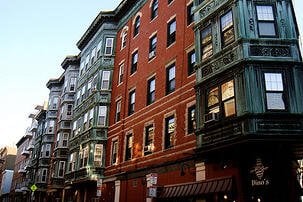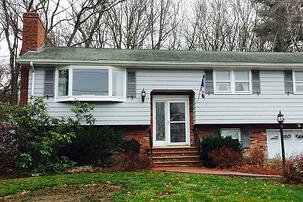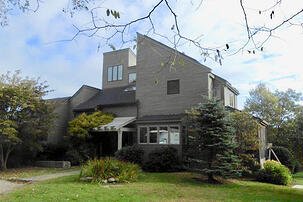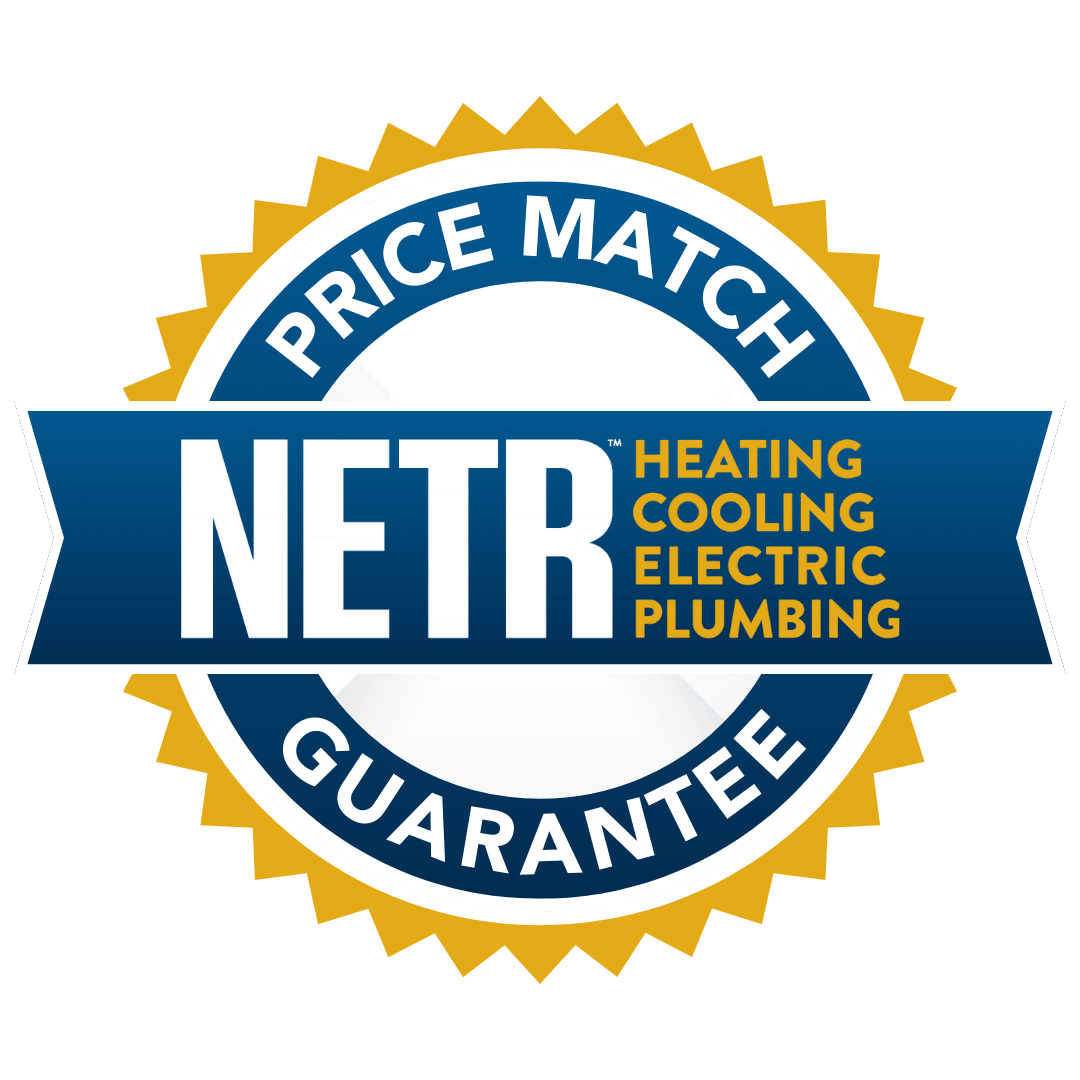Why Choose Ductless Air Conditioning In Boston
Mitsubishi Ductless Air Conditioning Offers the Ultimate in Cooling & Heating for Boston, MA homeowners.

Mitsubishi’s ductless air conditioning systems provide Boston homeowners with the most advanced home cooling technology available on the residential market today.
These units enable you to enjoy more precise comfort in one, or multiple rooms – while saving on energy bills.
Unlike traditional ducted systems where one thermostat controls a whole home or large zone, ductless systems give you the flexibility to transform individual spaces into pockets of perfect comfort. So now you can enjoy precise temperatures in sunrooms, workspaces, bedrooms, garages – we even have whole home solutions.
If you’re an empty nester, ductless enables you to control the temperature in individual rooms while closing off the rooms you are not using. This is particularly attractive to people who like their bedroom to be colder or warmer than the rest of the house.
If you are looking for reliable service and support with a system that offers a more advanced technology and more solutions to save energy while improving comfort, then contact N.E.T.R. Inc. today for a free consultation.
Clean Living
The air quality inside your home is often worse than the air quality outside. Ductless Air Systems use a sophisticated multi-part filtration system to remove contaminants such as allergens, viruses and bacteria from air as it circulates within a room.
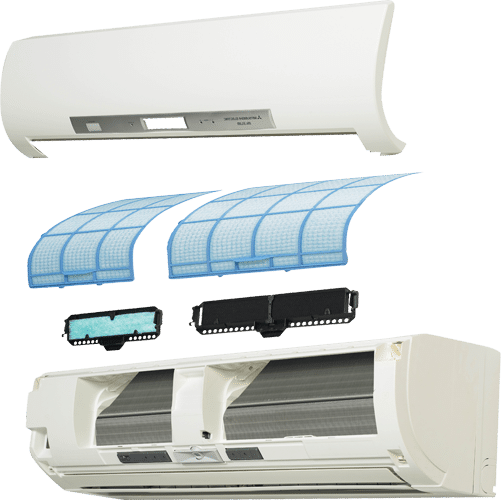
The green technology is friendly to you and the planet. These systems use an environmentally friendly R410A refrigerant which lessens the negative impact on Earth’s ozone layer. Because the ductless systems we install help you reduce your energy consumption, you are doing your part to leave less of a detrimental footprint on the environment.
Energy Efficiency Saves You Money
Ductless Systems are dramatically more efficient than traditional systems. Ductless systems use only the exact amount of energy needed to cool or heat an area by automatically sensing and responding to changes in the area without the unit turning on and off. As a result the cooling unit is up to 40% more efficient than a standard window unit. All this means you reduce your energy consumption and can save money on your energy bill.
If you’re ready to learn more about Mitsubishi ductless heating and air conditioning for your Boston, MA home, click the button below or fill out the form and one of our certified comfort specialists will be in touch shortly.
Contact NETR
CONTROL YOUR AIR CONDITIONING SITUATION ONCE AND FOR ALL!

MITSUBISHI DUCTLESS DELIVERS CLEANER AND MORE EFFICIENT COOLING RIGHT WHERE YOU WANT IT
Many Boston area empty-nesters have large homes with traditional central air conditioning systems. With Mitsubishis Electric’s ductless air conditioning, you can control the cooling in the rooms you use every day and close off unused rooms, saving energy and money.
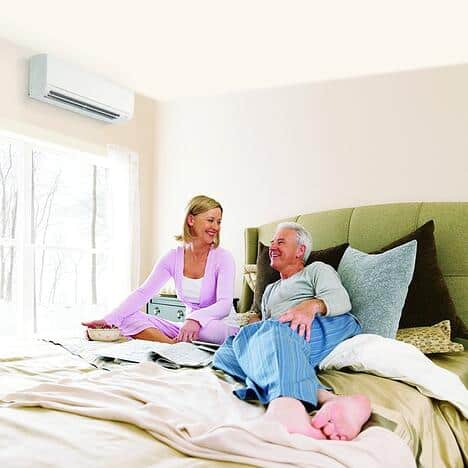
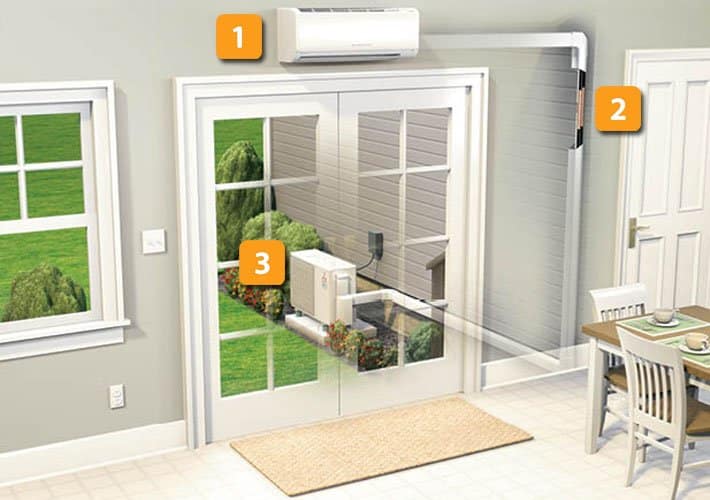
HERE’S HOW DUCTLESS WORKS
Ductless splits, also called “Mini-Splits” pump cooled or heated refrigerant directly to the wall or ceiling-mountedair-handling unit, and each unit has its own wireless electronic temperature control system, a.k.a., a remote.
Here’s how the system works in a single room application in the Boston, Massachusetts area.
1. The indoor unit uses refrigerant to cool or heat air and quietly pushes the chilled air it where you need it in your living space.
2. Refrigerant and electrical lines connect the outdoor unit to the indoor unit through a 3″ opening in the exterior wall.
3. The outdoor unit’s state-of-the-art heat pump cools or warms refrigerant and sends it back inside to the air handler, which continuously monitors the room for changes in temperature and sends conditioned air to the areas of the room that need it.
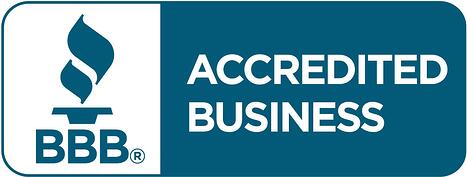
AIR CONDITIONING FOR THE ROOM THAT IS NEVER COOL
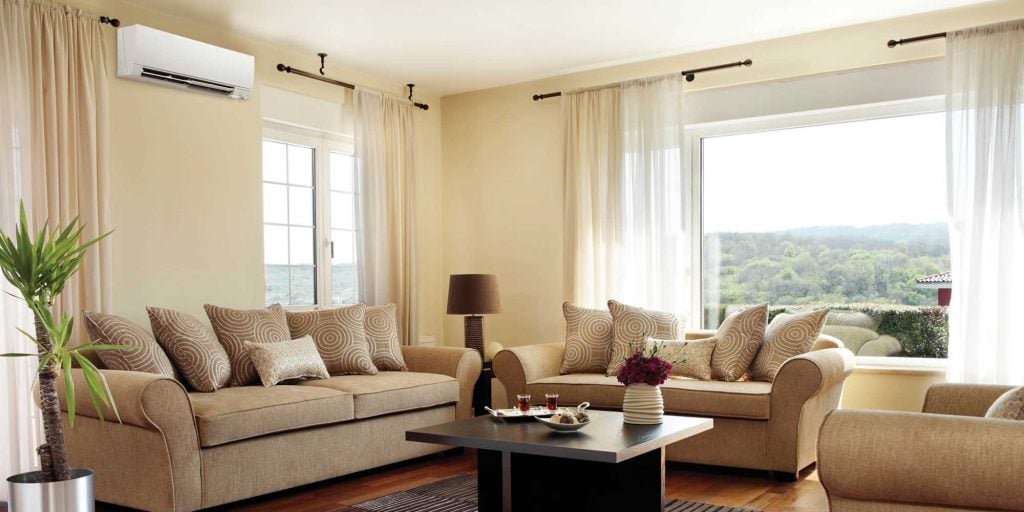
BEAT THE BOSTON HEAT
Boston area residents are accustomed to seeing high temperature and humidity combine to create uncomfortable rooms in every type of construction in every home, condo and apartment.



We’ve installed thousands of Mitsubishi ductless air conditioners all around Boston, and from New Hampshire to The Cape Cod.
Ductless wall air conditioners cut through that opressive wall of heat while operating whisper quiet.

BRING THE SAVINGS
Efficiency is the reason Mitsubishi’s ductless air conditioners have consistently qualified for the highest level of Mass Save and CEC rebates on ductless air conditioners and installation. Combined with 0% payments plans, sometimes these systems can pay for themselves in reduced energy costs in just a couple of seasons. Oh yeah, in winter some models flip to become the most efficent heat pump available to the residential market.
Mitsubishi ductless air conditioning is environmentally and budget friendly.



• Drastically lessen or eliminate your dependence on oil and gas
• Inverter technology results in substantial energy savings
• Zone control for improved comfort and decreased energy use
• Mitsubishi ductless air conditioners are ENERGY STAR® rated
• Local and state utility rebates and incentive opportunities.
Get up to $3750 in incentives & rebates
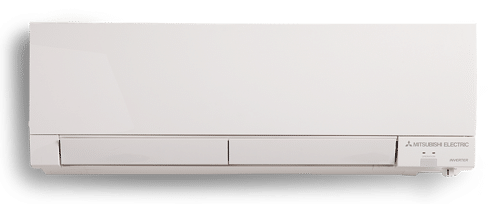
NETR wants to help modernize your Boston home’s HVAC system. Did you know that ductless mini split systems are also the best way to heat your home? That makes these ultra efficent Mitsubishi systems a whole-house solution that can save you on energy costs year-round. And, for a limited time, NETR is offering up to $400 in incentives and rebates.
Fill out the form on this page to request a no-obligation ductless air conditioningconsultation. We help homeowners like you affordably upgrade their comfort systems every day.
Ductless How to Buy
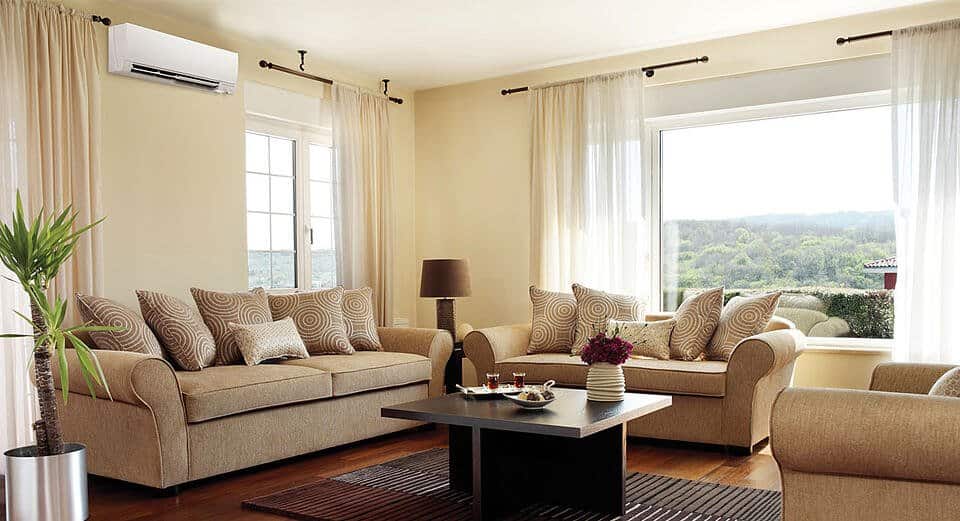
How much does it cost to install a mini split heat pump? Here in the Greater Boston area, ductless heating and cooling in a single zone configuration, fully installed and ready to turn on starts at $8500, and the price goes up from there depending on the number of zones that require conditioning.
More people are choosing Mitsubishi Electric Ductless Mini-Split heat pumps and air conditioners for their home so they can add the comfort they want, right where they need it most. Mitsubishi’s ductless “mini-split” systems combined with WiFi technology and Mitsubishi Electric’s Kumo Cloud system, enable homeowners to manage multiple zones of heating and cooling in the areas of your home where you need it most. And because they are one of the most efficient systems on the market today, you can get the comfort you crave with the flexibility needed to fit your home and your budget.
“…homeowners of a cape-style home in Natick MA decided four zones of comfort would work for them, making each bedroom comfortable and customizable on its own, while putting a separate zone in for the downstairs family room area.”
If you’re like most of our customers, you’re wondering how much it would cost to get the heating and air conditioning you want, while ensuring you keep your monthly energy bills as low as possible.
The cost of zoned systems depends on many factors. The system consists primarily of an outdoor unit connected by refrigerant piping to one or more indoor units, that come in a variety of styles. These indoor units can be networked together to create zones of heating and cooling that can each be controlled separately. A single outdoor unit could create one zone or eight, or anything in between, depending on what you need and what your budget is. Even better, you can expand an existing system to include additional indoor zones in the future, allowing you to stage out costs over time if that’s a concern.
For example, homeowners of a cape-style home in Natick MA decided four zones of comfort would work for them, making each bedroom comfortable and customizable on its own, while putting a separate zone in for the downstairs family room area. You can read more about how NETR helped design the perfect solution for this home by clicking here.
Because of the customization and flexibility of this solution, it’s not as straightforward to give a price as it would be if you were just going to buy a window air conditioner or a whole home, unitary central heating and air system. The solutions offered by Mitsubishi’s Zoned Comfort solutions can be ducted or ductless, or a hybrid of both. This flexibility means the solution for your home, whether it’s a condo in the North End, a split level in Burlington, or a contemporary in Gloucester, can be designed by our experts at NETR, but that the cost will vary depending on the number of zones you need to achieve the comfort you crave. As a Diamond Contractor Mitsubishi, we have the experience and expertise to make sure you get the best and most efficient solution on the market with a full twelve year warranty.
Boston’s North End
Problem: Homeowner needed a new HVAC system and wanted smart phone control and compatibility. Solution: A 4-zone ductless split system with Kumo Cloud controller allowed remote operation from anywhere from a smartphone or computer.
Burlington, MA
Problem: The existing system couldn’t heat and cool the entire home evenly. Solution: We installed a single-zone Mitsubishi Hyper Heat Ductless Unit to supplement existing system, making it easier to maintain an even comfort level throughout the house.
What are the contributing factors that make up the system cost?
The first step to understanding the cost of a new Zoned Comfort Solution for your Boston-area home is to understand the individual elements that contribute to that cost:
A. New equipment. Each Zoned Comfort Solution includes an outdoor unit, indoor unit(s), controls and parts including the refrigerant line-set, wiring and electrical accessories. Conditioning one room or zone comes at a significantly different price than heating and cooling a home with eight or more zones. Generally, new equipment comes in at $8,500 to $30,000. Your costs will vary and may be higher or lower than this estimate.
B. Labor and Equipment. In addition to the cost of the equipment, there is the cost for design and installation of the system, customized for your home and needs. In general, the cost is approximately equal to the cost of the equipment itself, that covers our certified and trained technicians who can handle refrigerants safely, as well as perform the plumbing and electrical work necessary for an installation. Labor costs also vary depending on the complexity of the installation, and this may vary depending on the type of home you own as well.
C. Possible additional costs:
- Electrical. These systems require a 240V outlet, which can cost between $200 to $1,000. The price will increase if your home’s electrical panel requires a new 240V circuit. To avoid surprises, securing an estimate before purchasing a new system is always advised.
- Equipment pad or stand. Creating an even surface underneath the outdoor unit for proper drainage generally costs $50 to $300. Alternatively, units can be mounted on brackets, so be sure to discuss the possible alternatives with us when designing your system and picking the best location for the outdoor unit.
- Ductless or ducted? Choosing ducted indoor units introduces a price that is difficult to generalize. Some homeowners might be installing ductwork for the first time while others may be repurposing some of their existing ductwork, which adds a level of complexity – adding potentially 75 percent to the labor cost. One of the best things about Mitsubishi zoned comfort solutions, especially for older homes and condos, is that they can be installed without ductwork, saving you the time, money and inconvenience of retrofitting a home with ductwork.
- Controllers. There are many controller options to choose from with Zoned Comfort Solutions. What you select will affect the cost. Wall-mounted units come standard with a handheld wireless controller; otherwise, factor in $200 to $300 per controller for a wall mounted thermostat or APP based control for each zone. There are even Kumo Cloud controllers available, which allow you to control your system from your smart phone, a benefit more and more people in the greater Boston area are choosing.
- Any additional equipment needed for unique situations. Some homes need a little extra something; this is true for older homes, high-performance homes, and homes in the mountains or near the water. Some of these homes may require specialized designs and/or equipment, all of which impacts the cost of the system. Mitsuibishi’s Hyper-Heating INVERTER®technology is developed to provide comfortable indoor temperatures even in extreme cold-climate conditions (as low as minus 13 degrees Fahrenheit) while saving energy and money- we’ve got solutions that can work in any of the winter weather Mother Nature can dish out here in New England.
As you can see, there are a lot of variables that affect the estimated cost of a Zoned Comfort Solution. While it is impossible to get a precise estimate of your costs without consulting a local contractor like us here at NETR, there is some third-party data available regarding the low end of the cost range. In July 2016, the Northwest Energy Efficiency Alliance published a study [1] showing that simpler heating and cooling zoned comfort solution installations (defined as having one outdoor unit connected to one indoor unit) range from $3,913 to $4,633. Based on this study as well as internal data from Mitsubishi, and prices increases up to the year 2024, you can expect to pay – on average – between $8,000 and $10,000 for each zone (each area you want to condition). Depending on how you design your system, its total price is likely to fall within a range that averages from $8,000 to $30,000.
Your specific price range is directly impacted by the choices you make with the experts at NETR regarding the number of zones you want to condition, whether to use ductless or ducted indoor units, whether you need cooling only or heating and cooling, if you want a standard or premium product, what type of indoor units work best and so on. As a result, the answer to the question, “How much does a Zoned Comfort Solution cost?” remains a range.
[1] The study was titled, “Northwest Ductless Heat Pump Initiative: Market Progress Evaluation Report #5”; the study can be read in full at http://neea.org/docs/default-source/reports/northwest-ductless-heat-pump…
Depending on your home and your needs, the best way to find out how much a system would cost is to give us a call here at NETR. As a licensed Diamond contractor, we can save you money by designing a system that works for your home and provides the comfort you need for your home- and for your budget.
To get a better idea of what a solution might look like for your home, be sure to check out our case studies of homes across the Boston area. We’ve likely done an installation in your town, or on a home just like yours, and you can get a feel to what the solution looks like and what we helped the owners achieve. Whether you live in a colonial, cape-style, victorian, contemporary, split level, tudor, ranch or a brownstone, we’ve worked on a home like yours and you can see many examples of what might be possible.
Getting an estimate for your home
Give us a call here at NETR. Systems designed and installed by an Elite Diamond Contractor like us are also covered by Mitsubishi’s 12-year parts and compressor limited warranty.
When you meet with us, discuss how many zones you want, where indoor and outdoor units might go, whether you need cooling only or heating and cooling, if you prefer ductless or ducted options (or a mix) and any special considerations – for example if you’re interested in a unit with an i-See™ sensor that detects temperature variations and controls the airflow.We’ll also talk to you about what to expect during the installation process.
Sounds pretty good, right? Soon you’ll have your estimated cost, and after that – a future filled with personalized comfort and energy savings.
How Ductless Works
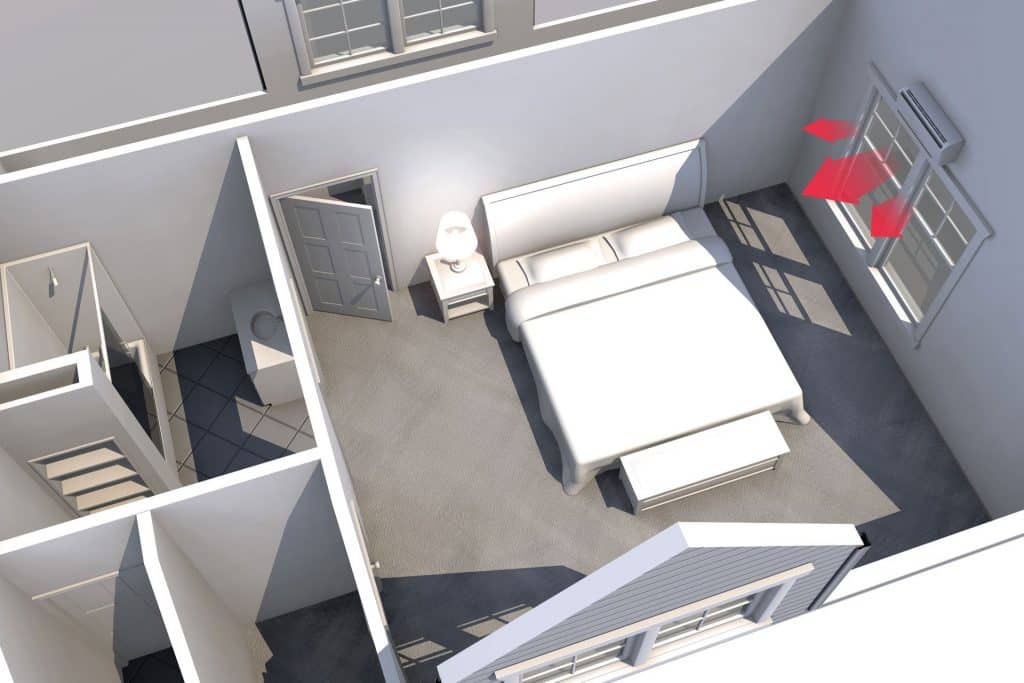
MAXIMIZE YOUR COMFORT
There are many ways to configure this modern and versatile system for all your comfort needs. Highly efficient and effective, a ductless system is the ideal primary heating and cooling solution for your home or business in New England.
See what our customers are saying about us!
HERE’S HOW IT WORKS
Ductless splits, also called “Mini-Splits” pump cooled or heated refrigerant directly to the wall or ceiling-mounted air-handling unit, and each unit has its own wireless electronic temperature control system, a.k.a., a remote.
Here’s how the system works in a single room application:
- The indoor unit uses refrigerant to cool or heat air and quietly pushes the chilled air it where you need it in your living space.
- Refrigerant and electrical lines connect the outdoor unit to the indoor unit through a 3″ opening in the exterior wall.
- The outdoor unit’s state-of-the-art heat pump cools or warms refrigerant and sends it back inside to the air handler, which continuously monitors the room for changes in temperature and sends conditioned air to the areas of the room that need it.
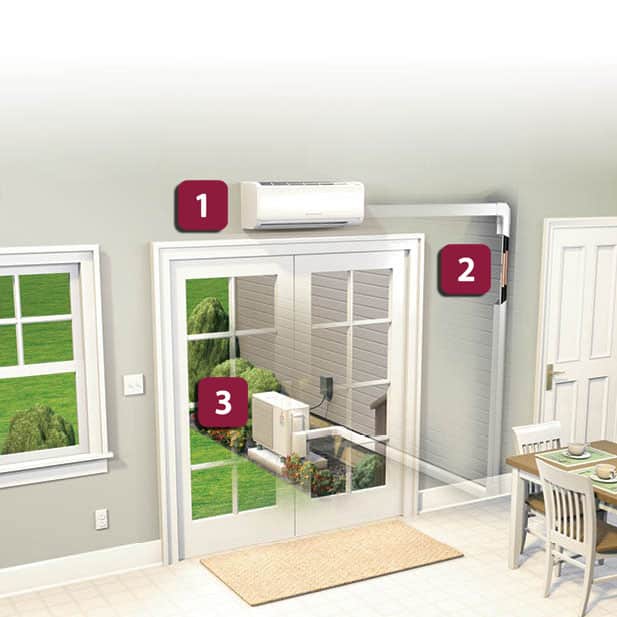
Watch the Video:
YOU CAN HEAT AND COOL A SINGLE ZONE OR MULTIPLE ZONES, BUT WHAT’S THE DIFFERENCE?
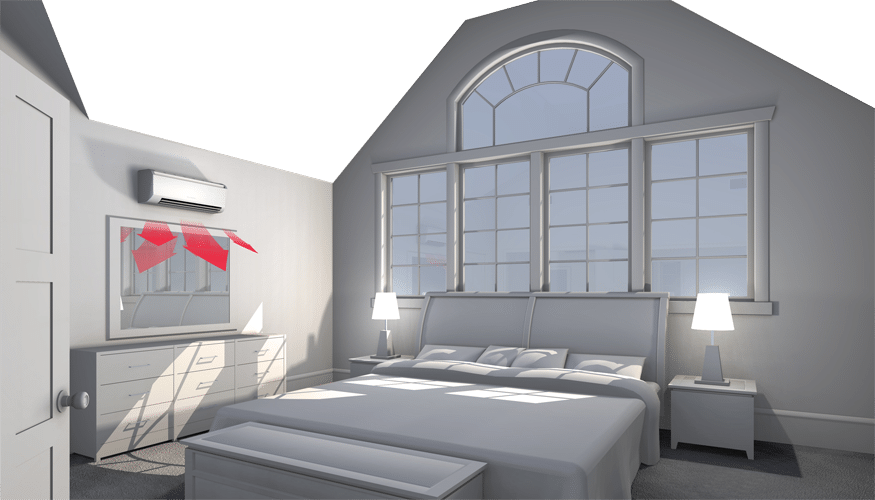
SINGLE ZONE
Perfect for additions, basements, sunrooms or any other space that offers a comfort challenge.
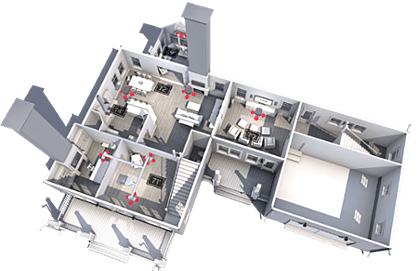
MULTI-ZONE
Keep all the rooms of a house at maximum, individualized comfort levels without all the ductwork.
SINGLE ZONE
Ductless is a perfect solution for homes with problem rooms that just never feel comfortable. You know, a great room with a high ceiling, or large glass exposure. A sun room or addition. Even a converted attic, or a remodeled room over a garage.
Ductless systems allow you to pinpoint the area of your home you want to condition, which always takes some of the load off your existing HVAC system, saving you money.
Check out the video to find out more about how Mitsubishi ductless is such a great solution for single zone applications or click the button below to download a brochure.
Multi-Zone
With a ductless system it’s easy to choose exactly how much you want to heat or cool each room or zone of your home to accommodate your family’s preferences and lifestyle.
Does dad like it cool and mom like it warmer? Kids off to school and spending most of your time in two or three rooms?
With a ductless solution from N.E.T.R. Inc., you can eliminate energy use in the rooms you’re not using, or design a climate in your home based on the factors that make you and your home unique.
MITSUBISHI DUCTLESS SYSTEMS ARE UP TO 40% MORE EFFICIENT THAN TRADITIONAL SYSTEMS
ENERGY EFFICIENT COOLING & HEATING SYSTEMS
Mitsubishi ductless split systems are ENERGY STAR® qualified, and several models are occasionally eligible for federal and state tax credits on top of local utility rebates. This is ever-changing, and can be super complicated, so let us help you navigate this process to ensure you get all the free money you deserve.
Energy providers have significant rebates available for qualifying heat pumps because these systems are so darn energy efficient! In fact, not only will you save on the cost of installation, but between rebates and 0% payment options, you might actually lower your monthly cost of home comfort!
We help Boston area homeowners with these programs every day, and we can help you too.
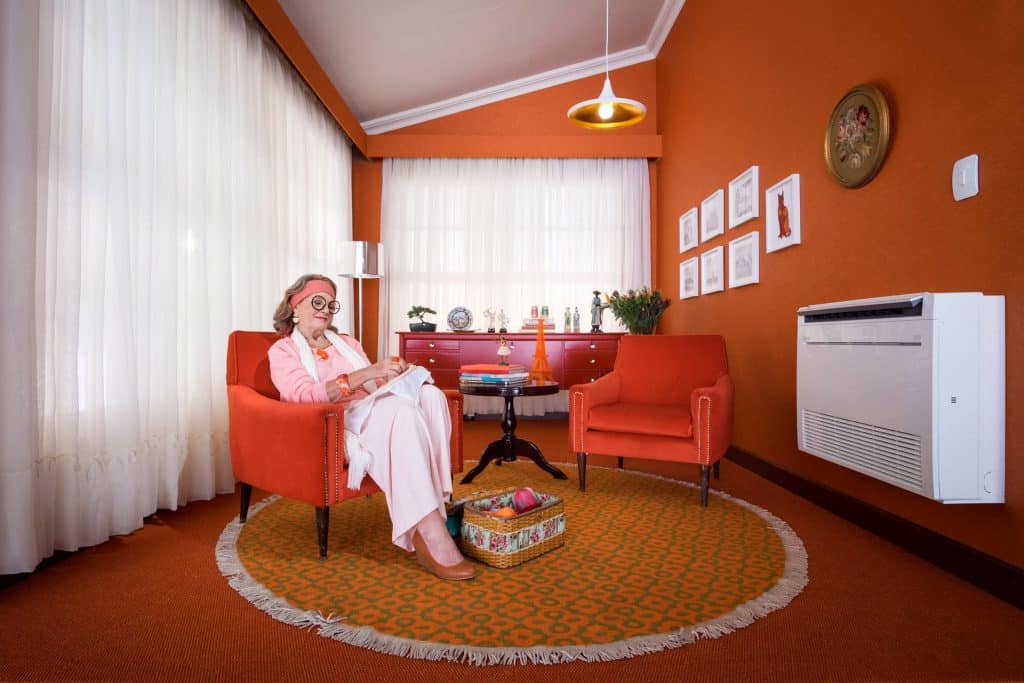
THE BEST HEATING AND AIR CONDITIONING FOR RESIDENTIAL AND COMMERCIAL APPLICATIONS
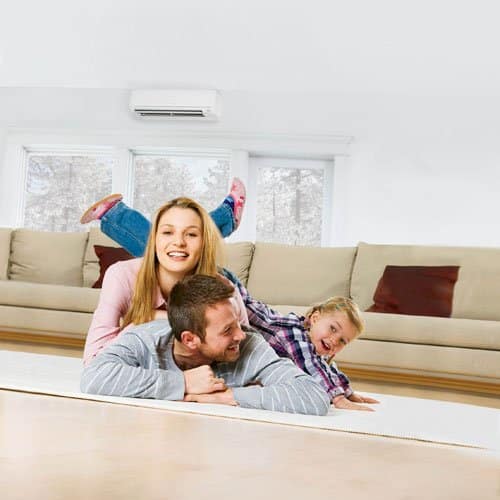
Find out how Mitsubishi ductless can transform your living space.

Learn how ductless can keep any commercial space comfortable.
All About Ductless
Efficient Technology
The tried and true, “smart technology” behind the Ductless Cooling & Heating systems of today has evolved over time. The technology allows energy efficient, individual comfort control with minimal impact on your home as we offer both ductless and limited length ducted solutions.
The technology behind Ductless Cooling & Heating systems is referred to in many different ways, including mini-split, multi-split, split-ductless, split-zoning, and variable refrigerant flow. Split-zoning technology is the primary method for conditioning spaces in homes and commercial buildings around the world.
Split-zoning systems allow each room (or space), using an individual indoor air-handler, to be controlled independently from other rooms, thus providing individualized comfort control within each room of a home.
A Ductless System uses advanced technology to bring you the ultimate in comfort and control while minimizing energy consumption. A Ductless System uses two small refrigerant lines plus power and control wiring to connect an outdoor unit to each individual air handler. This allows for easy installation in new construction and causes minimal disruption if you are renovating or retrofitting your home.
What is a Mr. Slim? How Does It work?
Mr. Slim is a split-ductless air-conditioning system. If you are familiar with a central system, you have the basic idea of what a split system is: an outdoor condensing unit and an indoor evaporator unit.
The basic difference between the two is that with the central system the evaporator unit is typically found in the attic and has ductwork branched off to the different rooms in your house. With Mr. Slim the evaporator is actually in the room being air-conditioned. The indoor unit has a quiet fan that blows across a cold aluminum coil while in the air-conditioning mode. The indoor unit is usually a wall-mounted type, and this unit is connected directly to the outdoor unit by copper tubing and control and power wiring. In the outdoor unit a compressor cycles refrigerant to and from the indoor and outdoor units, and the room air is cooled or heated based on the direction the refrigerant flows between the two.
Detailed Explanation:
Mr. Slim employs the same mechanical components as any basic air-conditioning system whose interactions cause the process of evaporation to occur. Mr. Slim is a split-ductless design, which simply means the indoor unit is separated from the outdoor unit and is connected by a gas and a liquid refrigerant line. The outdoor unit is considered the hot-side during the air-conditioning process. The cold-side unit is located indoors. In the heating process the compressor reverses this operation, and the heat energy is evaporated in the outdoor unit. Then the indoor unit collects this heat energy while a fan blows air over the indoor coil and distributes the warm air into the room.
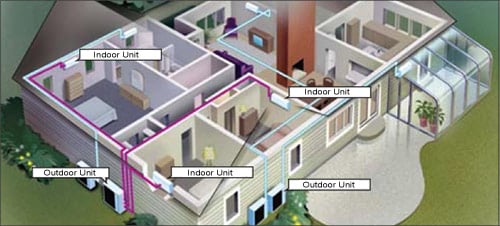
Air-conditioning Basics:
The process of air-conditioning is dictated by simple physics. Through the evaporation process heat is absorbed by the aluminum fan coil in the indoor evaporator unit and is removed from the room by the gaseous refrigerant. The heated refrigerant (pressured by the compressor) flows into the outdoor unit’s aluminum coils. Here a large fan blows across this coil to discharge the heat energy. The liquid refrigerant is cooled by this process and is cycled back to the indoor unit where a fan blows across it and distributes the cool air into the room.
Mr. Slim Filters & Cleans Your Air:
Mr. Slim is designed to circulate air within the space using about the same power as a 40-watt light bulb. Plus there are two standard built-in filters that clean the air and trap virus and toxins while also deodorizing.
- Anti-allergy enzyme filter which uses artificial blue enzyme catalyst on the filter filaments to capture harmful microbes
- Hybrid Catechin Pre-filter fibers infused with a bioflavinoid found in green tea that has antiviral and antioxidant properties
Mr. Slim Takes Care of Humidity:
Mr. Slim’s normal operation takes care of moisture very nicely. The indoor unit’s coil draws the moisture out of the air and wrings it out in the form of condensation that is drained outside or to a near-by drain. Mr. Slim is rated to remove between two to five pints per hour when the return air temperature is at 80 deg.F dry bulb or 67 deg.F, and the indoor relative humidity is around 50%. The outdoor conditions become wetter and can affect the indoor conditions. This will cause Mr. Slim to remove moisture out of the air at a faster rate.
Mr. Slim even has a mode of operation called DRY mode. This dehumidification feature provides added moisture control without lowering the temperature of the room. In this mode the fan speed slows slightly so that the air can spend more time on the indoor coil therefore wringing out more moisture.
Glossary Of Terms
AIR CONDITIONER: A mechanical device used to control temperature, humidity, cleanliness, and movement of air in a confined space.
Btu/h (British Thermal Units per Hour): A term that is used to measure cooling or heating capacity.
CAPACITY or LOAD: A refrigeration rating system usually measured in Btu/h.
COMPRESSOR: A pump found in a refrigeration or air-conditioning system, which pumps refrigerant through pipes between an outdoor and an indoor unit using pressure.
HEAT PUMP: An air-conditioning system that is capable of reversing the direction of refrigerant flow to provide either cooling or heating to the indoor space.
HSPF (Heating Season Performance Factor): A rating of the seasonal efficiency of a heat pump unit when operating in the heating mode.
HVAC: A term which stands for Heating, Ventilation, and Air Conditioning.
INDOOR UNIT: The air-handler of an air-conditioning system, which contains a heat exchange coil, filters, and fan and provides conditioned air into the space.
INVERTER TECHNOLOGY: Mitsubishi Electric’s MSY, MSZ and MXZ and all P-Series outdoor units use INVERTER-driven compressor technology(Variable Frequency Drive)to provide exceptional indoor, high-speed cooling and heating. By responding to indoor and outdoor temperature changes, these systems reduce power consumption by varying the compressor speed for extra energy savings.
MICROPROCESSOR: An electrical component consisting of integrated circuits, which may accept, store, control, and output information.
OUTDOOR UNIT: A component of an air-conditioning system which contains compressor, propeller fan, circuit board, and heat exchange coil. It pumps refrigerant to/from indoor unit.
REFRIGERANT: A gas/liquid substance used to provide cooling by direct absorption of heat.
REFRIGERANT LINES: Copper tubing through which refrigerant flows to and from indoor and outdoor units.
SEER (Seasonal Energy Efficiency Ratio): A rating of the seasonal efficiency of air-conditioning or heating units in cooling mode.
SPLIT-DUCTLESS SYSTEM: A system comprised of a remote outdoor condensing unit connected by refrigerant pipes to a matching, non-ducted indoor air-handler, and a remote controller. Special cases for introducing fresh air may call for limited ducting to air-handler from outside.

Contact NETR
Ductless for Older Homes

MODERNIZE YOUR COMFORT, KEEP THAT HISTORIC CHARM
When it comes to updating the HVAC system of an older home or structure, ductless is an affordable, non-invasive, energy saving choice.
See what our customers are saying about us!
DUCT-LESS IS MORE
NO DUCTWORK, NO PROBLEM
Often built before central heating and air conditioning were widely available, many older homes have no ductwork at all. To retrofit ductwork in an existing home requires taking away from space to make way for the ducts. Ceilings would be lowered or space would have to be carved out of the rooms. Unlike ducted systems, the footprint of a ductless system is very small.
HISTORIC ARCHITECTURE, INTACT
For many homeowners, part of the appeal of an older home is the architectural charm of older structures. A ductless solution will modernize the home while keeping the architectural integrity intact. The National Park Service (NPS) and Secretary of the Interior Standards and Guidelines for Rehabilitating Historic Buildings have recognized ductless systems for their ability to help maintain this historic character.
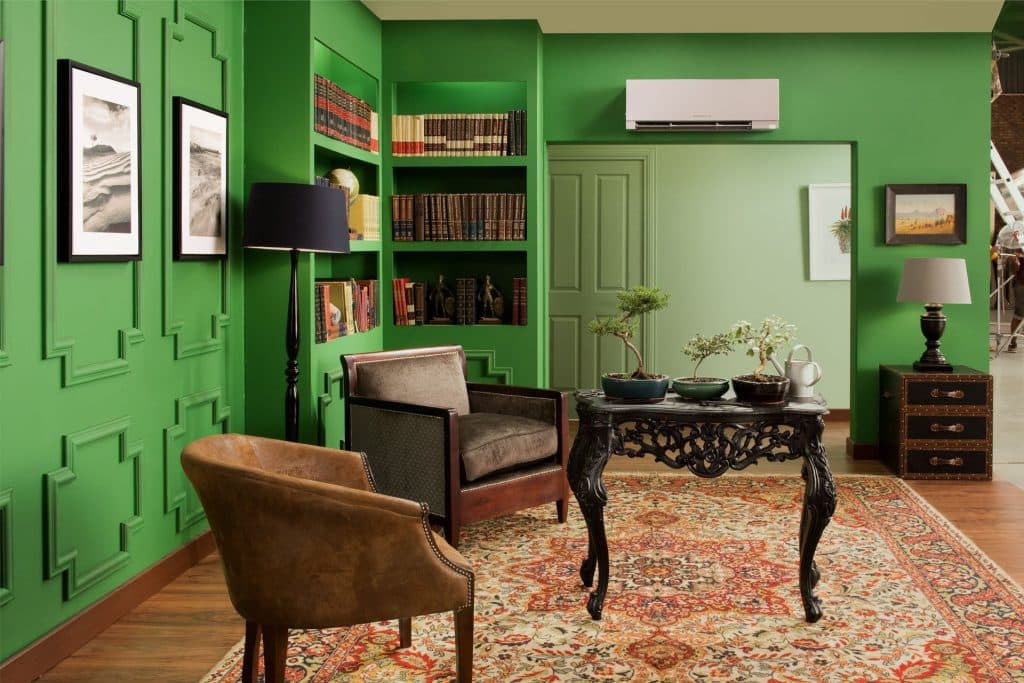
MITSUBISHI DUCTLESS IS FLEXIBLE ENOUGH TO WORK WITH OLDER SYSTEMS
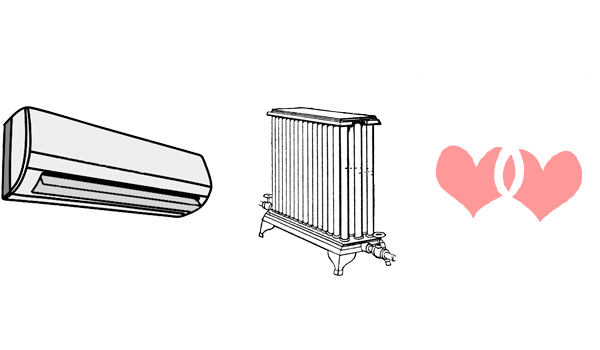
Love an aspect of your older HVAC system? The chances are that ductless will make a great compliment to it!
Ductless for Additions
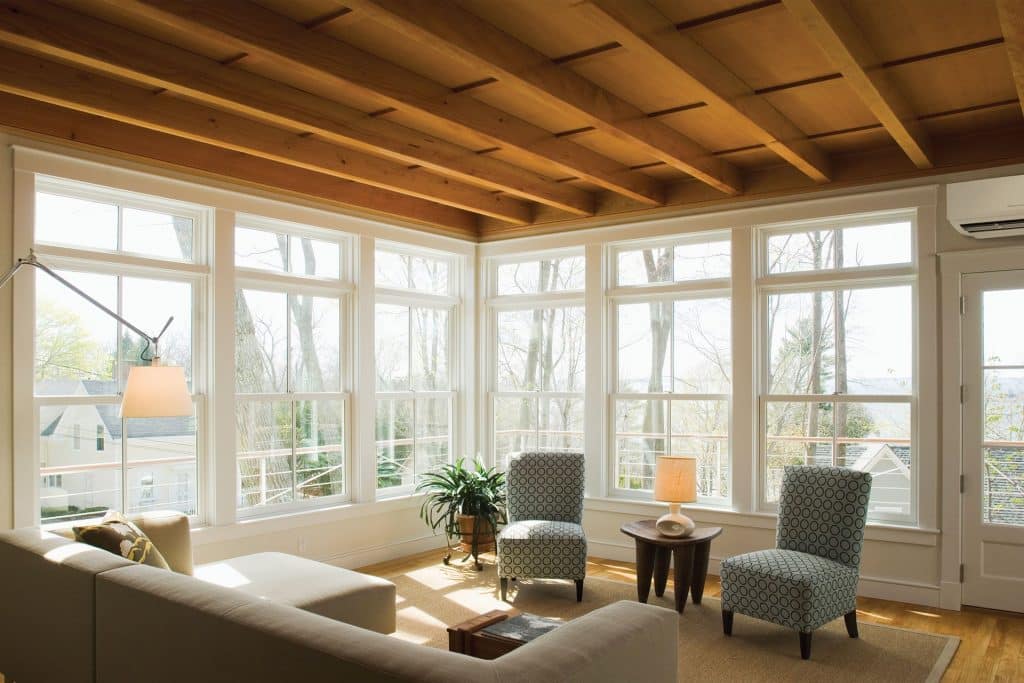
PROBLEM ROOMS ARE NO PROBLEM FOR DUCTLESS
Ductless isn’t always a whole-home system. Sometimes you just need to heat and cool your newly renovated living space or addition
With technology that enables the indoor unit to point the conditioned air toward the hot and cold spots in the room, Mitsubishi ductless splits have enabled us to turn many seasonal spaces like this into year-round sanctuaries.
See what our customers are saying about us!
ULTIMATE COMFORT FOR SUNROOMS, ATTICS, BASEMENTS, ADDITIONS AND MORE
FOR THOSE TIMES WHEN YOUR EXISTING HEATING AND COOLING SYSTEMS JUST CAN’T REACH FAR ENOUGH
We’ve installed ductless heating and cooling systems in a wide variety of home remodeling scenarios where the customer’s existing system was either too small to condition the air in the remodeled space, or installing duct work was just too expensive, destructive or aesthetically intrusive.
Talk to one of our comfort specialists before you plan out your remodeling project to see if a ductless system might be the right solution for your needs.
Be sure to ask about our financing options and rebates from your local utility!
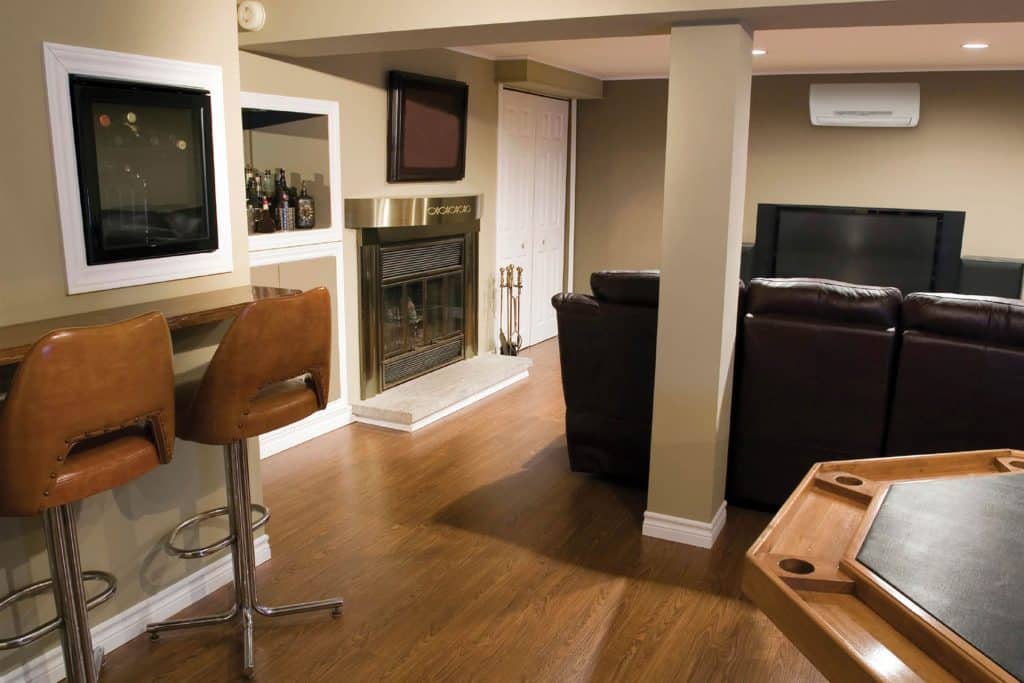
HERE’S WHY DUCTLESS IS PERFECT FOR THESE APPLICATIONS:
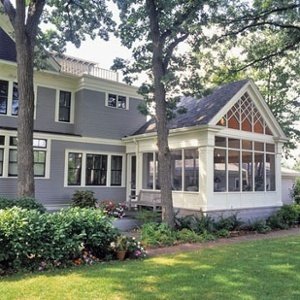
Sunrooms have an abundance of natural light and need to be cooled and heated differently from the rest of the house.
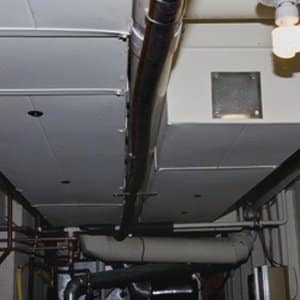
Additions or outbuildings are often a little short on additional room and lack the space required for big, bulky ductwork.
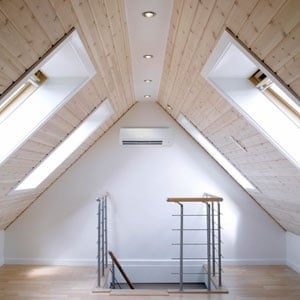
Some rooms are not regularly occupied and you can turn off the mini-split system and close the door to save money.
Central Air vs. Ductless HVAC
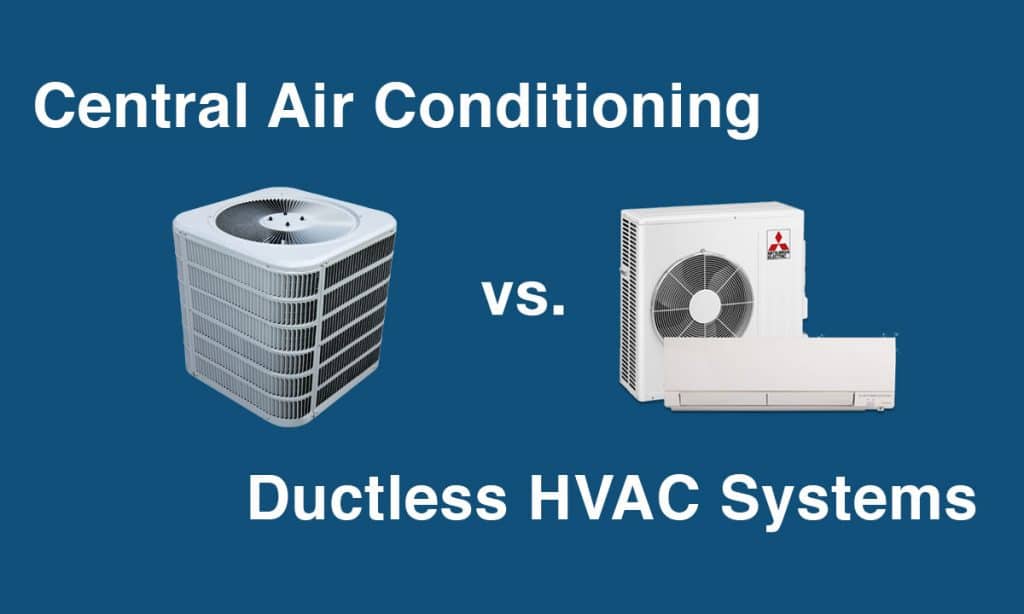
For years, central HVAC systems were the default option, but recently, the popularity of ductless systems has surged. Ductless systems are popular in homes that don’t have ductwork, but due to the efficiency of these systems, people are also choosing to replace their ducted systems with ductless options. Here’s what you should know about the differences between the two.
What Is Central Air Conditioning?
There are two types of central air conditioners: split systems and packaged units. With a split-system central air conditioner, the indoor unit holds the evaporator, while the outdoor unit houses the compressor and condenser. Generally, the indoor unit includes a furnace, and fans blow hot or warm air through the building using a series of ducts.
In a packaged central air conditioner, the condenser, evaporator, and compressor are all located in one cabinet, which is installed outside the home or building. These units may include a natural gas furnace, which eliminates the need for a separate indoor furnace. Again, ducts run from the cabinet to vents that are spread throughout the building, and fans blow hot or cold air through the ducts.
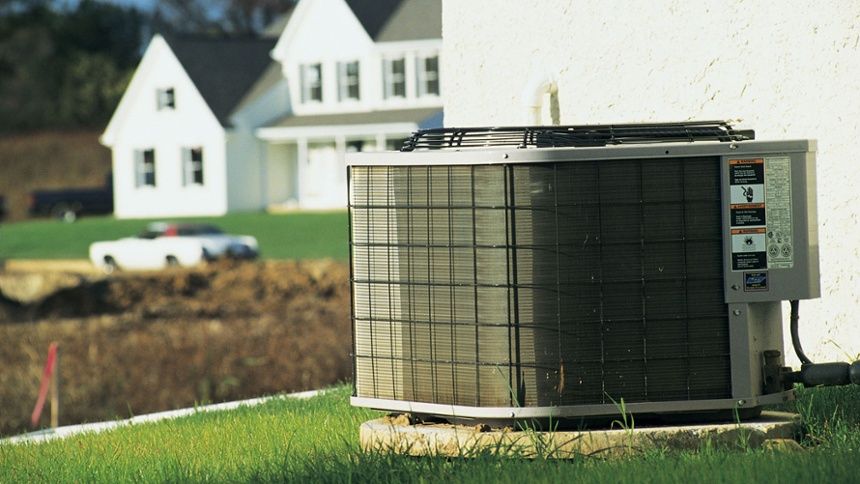
What is a Ductless System?
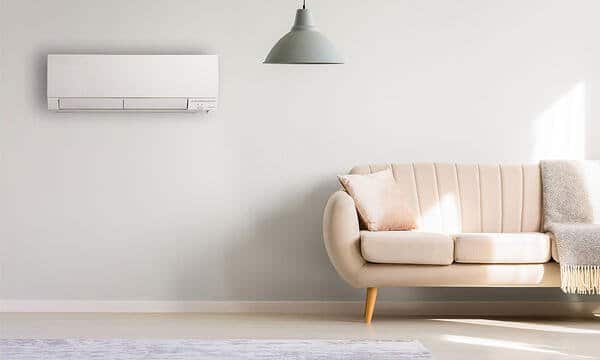
Ductless systems also feature indoor and outdoor components and include a heat pump so they can handle both heating and cooling. One outdoor unit can work with multiple indoor units which is perfect for most situations, but to cool a large multi-story commercial building, you may need more than one outdoor unit.
Unlike central HVAC units, ductless systems don’t have ducts. They move refrigerant between the indoor and outdoor units using small tubing that runs through the walls or ceiling cavities, and cool air blows out of the indoor units, rather than out of vents connected to ducts.
Ductless System vs Central Air Conditioning: Pros and Cons
Here are the most important factors to consider when evaluating the benefits of a ductless system over central air conditioning.
Design Flexibility

With ductless systems, the outdoor unit is small and can be placed in a range of positions such as on the roof, on a ledge, or next to the building. Indoor units come in multiple designs to work with your decor, and you have a lot of flexibility on where to place the units. In contrast, with central HVAC systems, you have limited options on where the vents can go.
Energy Savings

With a ductless system, if you decide that you don’t need to use a room on a certain day, you can turn off the cooled air. This provides significant energy savings. Beyond that, ductless systems operate more efficiently than their central cooling counterparts. As air travels through ductwork, it tends to seep into unconditioned areas of the building.
For example, if your ducts run through a hot attic, some of the cold air leaks into that space, driving up your overall cooling costs. Due to these issues, a central air conditioning system can result in energy losses of nearly 30%. With a ductless system, there is no ductwork involved, so the problems of leaks and wasted cool air are eliminated completely.
Easy Installation

The absence of ductwork makes ductless systems relatively fast and easy to install. There is no need to tear down walls or do major renovations, and most contractors can handle small installations in a day or so. For large installations with multiple indoor and outdoor units, you can even opt to do the installation in zones so that you don’t have to shut down all of your operations.
Cost

If you don’t have existing ductwork, the cost of ductless is considerably less expensive than putting in a central HVAC system. In cases, where the ductwork is already in place, however, ductless systems may be slightly more expensive than just buying a new central air conditioner.
However, installation is only the first cost to consider. You should also consider energy efficiency, and in most cases, ductless systems are cheaper to run long-term. Beyond that, you never have to worry about cleaning the ducts when you have a ductless system, and that adds to the overall savings.
Residential Ductless Heating and Cooling | Installation & Maintenance
What Is Residential Ductless?
Residential ductless systems are designed for use in homes. These systems feature an outdoor compressor and one or more indoor air handling units. Each of the indoor air handling units connects to its own thermostat, allowing you to heat and cool different zones in your home separately. You can also use a residential ductless system in a garage, addition, basement, attic, or any other space not connected to your ducted HVAC system.
| Additional Resources Ductless 101 FAQs on Ductless Heating and Cooling Systems How Ductless Works |
How Does Residential Ductless Differ from Commercial HVAC?
Residential and commercial ductless systems heat and cool your space. Both options allow you to set up a variety of zones that are controlled by individual thermostats, which improves efficiency while making the space more comfortable for occupants. However, residential systems tend to be smaller, more affordable, and less complicated than commercial systems.
Ductless Energy Savings
Ductless systems heat homes more efficiently than ducted heating and cooling systems and are more efficient than most electric resistance heating systems. Unfortunately, warm or cold air seeps out of ductwork before it reaches its destination. Because most ductwork runs through unused areas such as attics or ceiling cavities, that energy gets wasted. Ductless heating and cooling systems move heat rather than creating it, which adds to their efficiency. Most units feature an Energy Star rating, indicating their efficiency levels.
| Additional Resources How to Reduce Energy Bills |
Other Benefits of Ductless for Homeowners
In addition to improving efficiency and comfort for homeowners, ductless systems offer a host of other advantages. They are ideal for additions and other areas of your home that do not have ductwork. Each zone features individual controls, so you don’t have to heat and cool unused spaces. You can even set different temperatures for different areas of your home. The outdoor units are small, so they don’t interfere with your curb appeal, and the indoor AC units come in a range of designs to complement your space. These systems run very quietly and improve indoor air quality.
| Additional Resources 15 Benefits of Ductless Heating and Cooling Single-Zone Versus Multi-Zone Ductless Heating and Cooling |
Residential Ductless Heating
Ductless systems feature a heat pump which extracts warmth from outside the home and moves it inside using a refrigerant. The refrigerant runs from the outdoor compressor to the indoor air handling units. In the past, this set-up worked best in temperate climates, but contemporary ductless systems use technology that is efficient even in frigid climates.
The Mitsubishi Hyper-Heating heat pump, for example, functions in temperatures as low at -13 degrees. Ductless systems are often used as the sole heating method in a home, or you can augment your current heating system with a residential ductless unit. To improve efficiency, even more, you can power your ductless system with solar energy.
Residential Ductless Cooling
Ductless cooling systems also utilize heat pumps, but they work in the reverse direction. Rather than moving warm air from outdoors to indoors, these systems remove warm air from inside the home and send it outside. Ductless systems are more convenient than window air conditioners and have advantages over central cooling. They are ideal for homes that have heating but no air conditioning.
| Additional Resources 25 Super Cool Facts About Air Conditioning Ductless Air Conditioning in Boston, MA Cooling Systems 101 |
Cost of Residential Ductless
Like all heating and cooling systems, residential ductless systems are an investment in your home. The cost varies depending on the number of indoor units and other features you select for your system. While assessing the cost of a ductless system, keep in mind the long-term energy savings associated with these units. Note that in many cases, you can reduce your costs even further thanks to rebates and low-interest financing options.
| Additional Resources What Does Mitsubishi Ductless Heating and Air Conditioning Cost? Rebates |
Choosing a Ductless System for Your Home
The right ductless system for your home varies based on your needs. In some cases, you may want a system that heats and cools your entire home; in others, you may only want to heat or cool a small part of your home. To match the style and decor of your home, you can also choose from wall or floor mounted units, ceiling cassettes, or suspended indoor air handling units. On top of that, you need to consider ventilation and humidity controls, brands, and Energy Star ratings.
| Additional Resources Which Ductless System Is Right for You? |
Getting Your Home’s Ductless System Installed
To install a ductless system, your contractor needs to put in the outdoor and indoor units and connect them with flexible tubing and electrical wires that run between the units, through a conduit. An experienced HVAC professional can guide you toward the right size unit for your space and identify the most advantageous locations for your indoor air handling units. This process is a lot less invasive than putting in ductwork, and most residential installations can be completed in just a day.
| Additional Resources What Size Ductless System Do I Need? |
Residential Ductless HVAC Maintenance
Maintenance is critical if you want to safeguard the lifespan and efficiency of your ductless HVAC system. Luckily, residential ductless systems don’t need much maintenance. Clean your filter regularly, keep the outdoor unit clear of debris, and empty your condensate pan as needed.
Additionally, keep an eye out for issues that may compromise the efficiency of your unit. An HVAC contractor needs to service your ductless system once a year. They can perform more advanced cleaning and maintenance steps. They can also alert you to the need for any repairs, which helps you avoid unexpected breakdowns and emergencies.
| Additional Resources How to Clean Filters in Ductless Mini Split Heat Pump Air Conditioners |
Can You Install Your Own Ductless System?
Because ductless HVAC systems seem relatively easy to install, some homeowners want to install their systems instead of hiring an HVAC contractor. It’s important to not approach installation as a DIY project – not only could you get hurt, but you could also end up costing yourself more money in the long run. Instead, you should always work with a professional. They have the experience to deal with unexpected installation issues, and they can ensure your system is installed correctly so that your efficiency is not compromised. Most contractors can also guide you through the process of applying for rebates.
| Additional Resources What Is a Mitsubishi Diamond Elite Contractor? Mitsubishi Diamond Elite Contractors The Dangers of DIY Ductless Systems |
Ready to upgrade to a ductless heating and cooling system for your home? Want to learn more about the benefits of these systems and get help deciding if a ductless unit is right for your needs? Then, contact us today. At N.E.T.R., Inc., we work closely with our clients to ensure we meet their heating and cooling needs in the best way possible. We have been working with both residential and commercial clients for years, and we look forward to helping you.
MITSUBISHI ELECTRIC ELITE DIAMOND CONTRACTOR
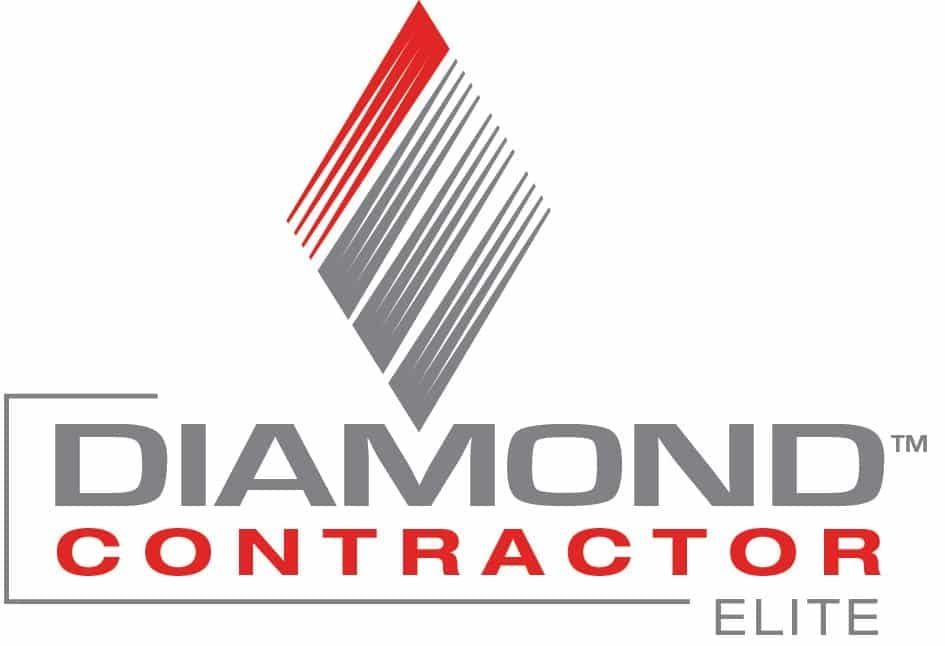
Mitsubishi Electric Elite Diamond Contractors have received additional training directly through Mitsubishi. These professionals are armed with specialized knowledge and information about Mitsubishi heating and cooling systems, and they can provide customers with extended warranties. If you’re considering getting a Mitsubishi ductless heating and cooling system, you should work with an Elite Diamond Contractor to ensure you have the best experience possible. Here’s an overview of what makes these contractors so unique.
Benefits of Hiring a Mitsubishi Electric Elite Diamond Contractor
Throughout the United States, only approximately 3,000 HVAC contractors have qualified for the Mitsubishi Elite Diamond program. This program ensures that participants get top notch training in how to select, install, and service ductless systems for residential and commercial clients. The program also monitors contractors’ marketing, training, service, sales, and customer satisfaction to ensure they are providing their customers with the best products and services in the industry.
Mitsubishi knows its products are designed to be efficient and extremely high quality, and the company wants to see traits reflected in its contractors. To make that possible, Mitsubishi requires its Diamond Contractors to meet select criteria in many different categories until they reach “Elite Diamond Contractor.”
To reach this level, HVAC companies must meet several requirements. At N.E.T.R., Inc. we are Elite Diamond Contractors. That means we achieve the highest level of criteria set by Mitsubishi. To reach that level, we do the following and more:
- Send our service technicians to two-day residential product training.
- Complete advanced residential service training.
- Attend off-site factory training with our service technicians.
- Have our sales and services staff regularly complete e-learning modules from Mitsubishi.
- Register all Mitsubishi purchases with the company to ensure you receive an extended warranty.
- Register at least 125 units per year to maintain Elite Diamond status.
- Respond to customers quickly —online or over the phone. We address customer concerns within 15 minutes. We always make appointments to come to customer’s homes as soon as possible to help them decide which unit is best for their space. Mitsubishi tracks response speed to ensure that companies with Diamond Contractor status are providing quality service quickly.
- Provide information on our website so you can learn about Mitsubishi products from the comfort of your home, as you look for the best heating-and-cooling products for your needs.
- Help our customers apply for financing through the finance company registered with Mitsubishi.
- Offer a 12-year labor warranty after installing a Mitsubishi system.
- Connect Mitsubishi approved HVAC system software from a third-party vendor to ensure that you can run your system easily and control zones separately.
- And more
What Is Mitsubishi Electric Trane HVAC US?
The Elite Diamond Contractor program is run through Mitsubishi Electric Trane HVAC US (METUS), and in the past, it was run by Mitsubishi Electric. Part of the Mitsubishi family, METUS was formed in 2018. A 50-50 joint venture between Ingersoll Rand PLC and Mitsubishi Electric US, the company is the leading provider of ductless heating and cooling systems and variable refrigerant flow (VRF) technology in the United States and Latin America.
The company supports the following brands: Mitsubishi Electric Cooling & Heating, Trane®, Mitsubishi Electric and American Standard® Heating & Air Conditioning, and Mitsubishi Electric. It is committed to using technological advancements to deliver comfort and efficiency to commercial and residential buildings. If you want one of these brands of heating or cooling systems in your home or office, you should work with a Diamond Contractor. For the very best results, you should choose an Elite Diamond Contractor.
As an Elite Diamond Contractor, we can help you choose and install the right ductless heating and air conditioning system. We’ll even ensure that you receive the quality products and services that you deserve when making this type of investment. Whether you want enhanced comfort for your home or office, our team, along with Mitsubishi products, can provide that for you. To learn more or to get a quote, contact us today.

